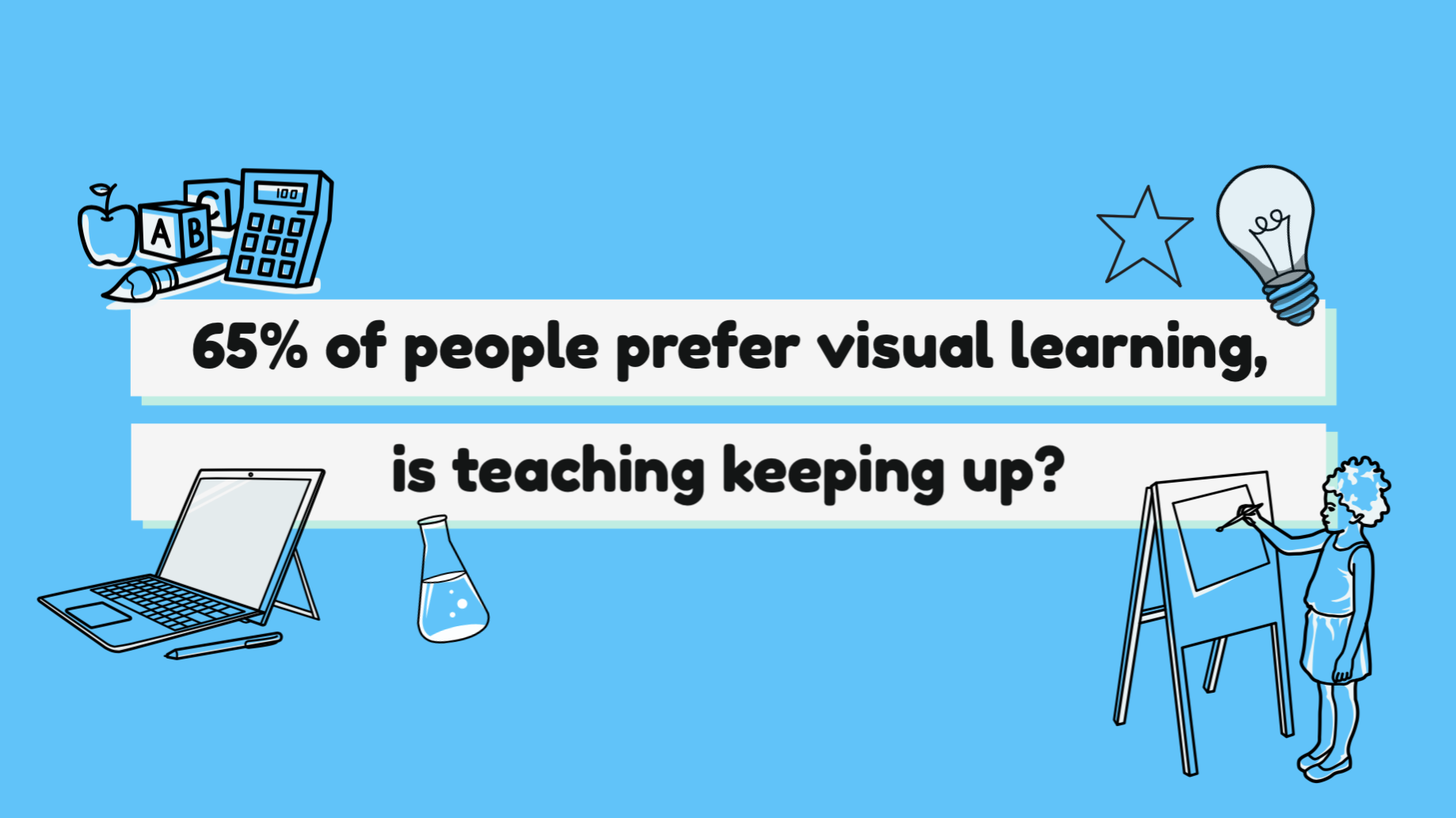What sets the best VideoScribe videos apart from the rest? In many cases it’s having a cohesive look and feel.
Ensuring your images, colors and designs all complement each other can give your videos that extra professional touch. But achieving such a slick and effortless look isn’t always as effortless as it seems...Which is why we wanted to write this dedicated blog all about how to set a visual theme for your VideoScribe video, from choosing backgrounds and color palettes to drawing hands, images and fonts.
To put these tips into practice, why not log in to your VideoScribe account or start a free 7-day trial to experiment with theme creation as we go.
Backgrounds
First things first let’s talk about backgrounds since they can have the biggest visual impact on your screen. To set the right stage for your video you need to think about the story you’re telling - where is it set? How will it play out? What do you need to show?
These kinds of questions should be answered as you plan your video and you could even create a quick storyboard to make sure you’re not missing anything. Download our free editable storyboard template here to help.
Once you have a vision for what your background/s need to include, you have lots of options to bring it to life. Here are some of our favorites.
Photo backgrounds
Importing a single photo as your background can be a really effective way to quickly make your video look more polished. Similarly overlaying multiple photos on top of each other can give you an unlimited amount of options and help you make something truly unique. You can see this in action in our example.
We found these photos on Unsplash and Pexels which are great places to search for free images you can use in your projects.
Patterns and shape backgrounds
Another option to brighten up plain backgrounds is to use our shapes images to create patterns. Keep the designs simple and choose complementary colors that won't detract from the main action.
You can get super creative with these by using a mix of shapes so experiment and see what works for your video.
Images and rooms as backgrounds
Alternatively, if you know you'll be using lots of images from the VideoScribe library, set the scene easily with one of our room or landscape backgrounds. These are ready made scenes that you can use as the backdrop for your story. There are lots to choose from so you can switch from scene to scene as your story flows.
Hands
Next up, we need to choose a drawing hand. You can choose to have no hand and your images will appear to draw by themselves, pick a hand from our library of different options, or even upload your own hand. Whichever you choose, keep in mind:
Your audience - if you're telling a story in which the audience are meant to see themselves, then it makes sense that the drawing hand looks like them. So if you're appealing to children, choose a child's hand (there's one in our library). Or if your audience is exclusively women, choose a woman's hand. It's all about building a cohesive picture and details like this do matter.
The narrator - alternatively, your story might feature a strong narrator. It could be you, a fictional character or someone you know. In some cases it may make more sense for the story to look as if it's being drawn by them. So again consider their characteristics and pick a hand that's most suitable to make your story more compelling. Learn how in our quick video 👇
Fonts
If your video will have no on-screen text then you can skip this step. But for those including written content, choosing the right font is key. Here are some things to consider:
Your audience - what will resonate with them, if it’s aimed at school kids, a font that’s fun, simple and friendly could be best. But for a room of stakeholders you might need a font that’s more conventional.
Your brand or persona - if you’re setting yourself out as a luxurious brand then the font you choose for your video should reflect that.
The message of your story - the fonts for a scary story versus a love story should look very different. So consider how you can use fonts to reinforce your narrative and build more drama.
If you’ll be using more than one font, take your time to pick fonts that work well together by considering their height, size, complexity and whether they're serif or sans serif. You can see some examples of this in our quick video 👇
Images
Once you've outlined your background style and font/s, it's time to pick an image style. The images you choose should suit the background you've chosen - i.e. if you've gone for a VideoScribe room set image then you'll probably want to your characters and images from our library. However, if you've got a patterned background you might want to keep things simple with stick figures.
So let's look at the options you have to choose from. With each of these, consider how they would work with the other elements on your canvas.
Stick figures
So as we mentioned, stick figure images are perfect for simpler stories where you want your message to be the star of the show. They work really well with patterned backgrounds because neither overshadows the other. You can see a selection of our stick figure images below.
Stylized images
In contrast, if you're building out a scene with VideoScribe rooms and backgrounds then using similar styled images will work best. Look for bold graphics with thick outlines to ensure each element stands out. We have thousands of images in styles like this to choose from.
Icons
To pair your visuals back and create a slick look experiment with our icon images. They're simple graphics designed to help you clearly explain topics and ideas. They're all color changing so you can edit them to suit the rest of your video. But we'll get onto color in a second... 👇
Colors
Finally, don't forget about color! When you're focused on telling your story it can be easy to let details slip. But color plays a big role in influencing how we feel so take the time to go back through your video and ensure your colors support your message. Here's what to look for:
Emotive colors
Here we mean colors that have a distinct emotion attached. For instance yellow has been proven to lift people's mood while red can have connotations of anger or aggression. So again think about the emotions you're trying to draw out of your audience and which colors may work best.
Complementary colors
When it comes to the overall look and feel of your video, complementary colors can ensure your video looks polished and put together. These are colors at opposite sides of a color wheel like orange and blue or green and red. See our video below for more details.
Contrasting colors
On the other hand, if you want to make a statement, contrasting colors can add more visual interest to your video. You'll have seen big brands like Pepsi use their signature red and blue to draw attention. The same principle works in video - either through your images, backgrounds or text.
Check out our introduction to color theory video for more advice on choosing colors 👇
Don't forget, you can also edit the colors of lots of our images to suit your chosen palette. Learn how in our quick tutorial 👇
And that's a wrap! Hopefully by now your video is looking slick and polished ready for your audiences to enjoy. As always, to put any of these tips into practice, start a free 7-day trial of VideoScribe or log into your account.




.png)


![How to create animation magic [3-part guide to video success]](https://blog.videoscribe.co/hubfs/How%20to%20create%20animation%20magic%20guide%20VideoScribe.png)





COMMENTS